Massive kaleidoscopic murals, strange statues, and architecture ranging from the magnificent to the outright bizarre — a walk through Mexico City is an artistic endeavor that will take you past it all. CDMX has long stood among the great art cities of the world, and lately it’s been gaining a reputation as one of the greatest. While much of this notoriety is derived from its abundant, excellent museums — not to mention the fact that it produced the inimitable Frida Kahlo — Mexico City offers a wealth of outstanding art opportunities in its very streets.
I’ve come to know it well, having spent several years living across several different districts. If you’re looking for things to do in Mexico City, take a look at a smattering of street art suggestions that can be experienced over the course of an afternoon of walking. I suggest heading out in the morning — by 11:00 a.m. at the latest. Be sure to bring along a water bottle because you will be walking through Mexico City’s ample sunshine. Mexico has a lot of incredible cities to experience, but there’s no place like CDMX.
Parque Mexico and Parque España
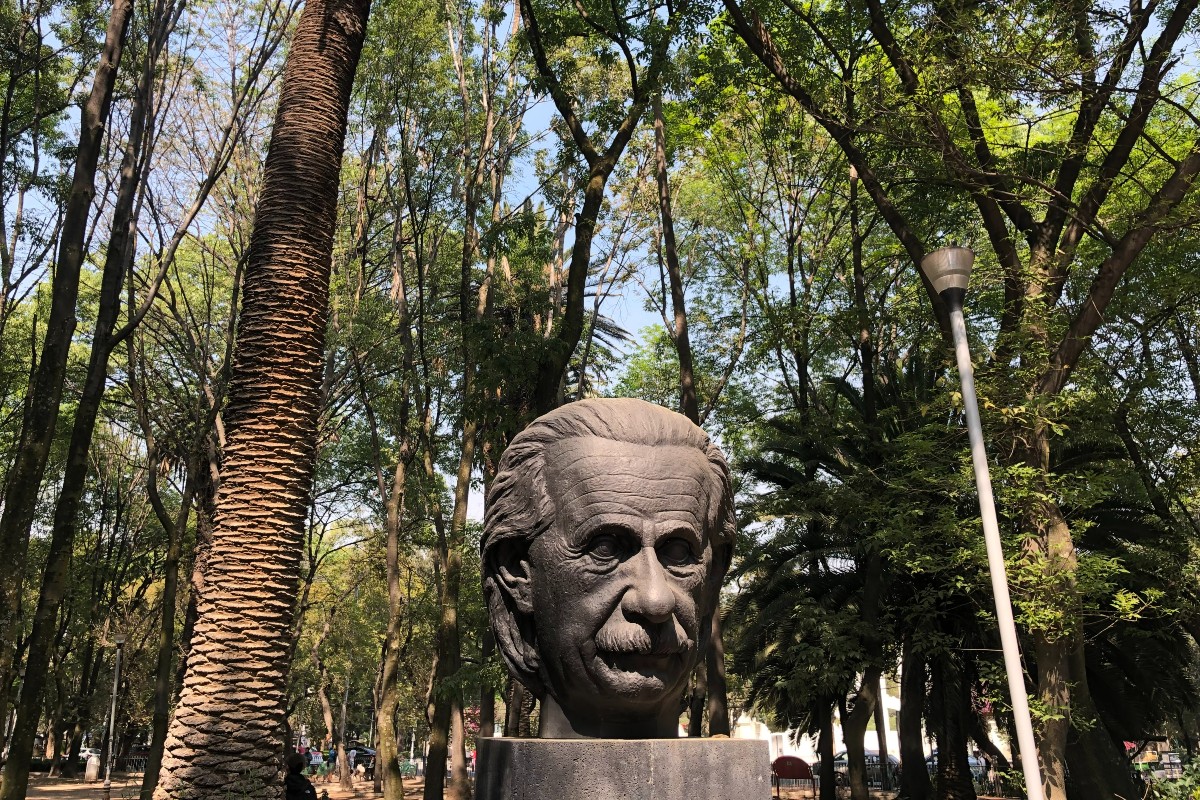
Start in Condesa. You’re most likely already staying in or perhaps near this trendy colonia, which is known for its numerous restaurants, cafes, galleries, and shops, many of which are located in direct proximity of Parque Mexico at the heart of the neighborhood. Walk the path that circles the park along Avenida Amsterdam, grab a coffee or juice at one of the many drink options, then make your way through the dual parks Mexico and España. Here you’ll find several impressive murals, a dog park, an “audiorama” park for silent reading, and a massive bust of Albert Einstein.
El Angel de la Independencia
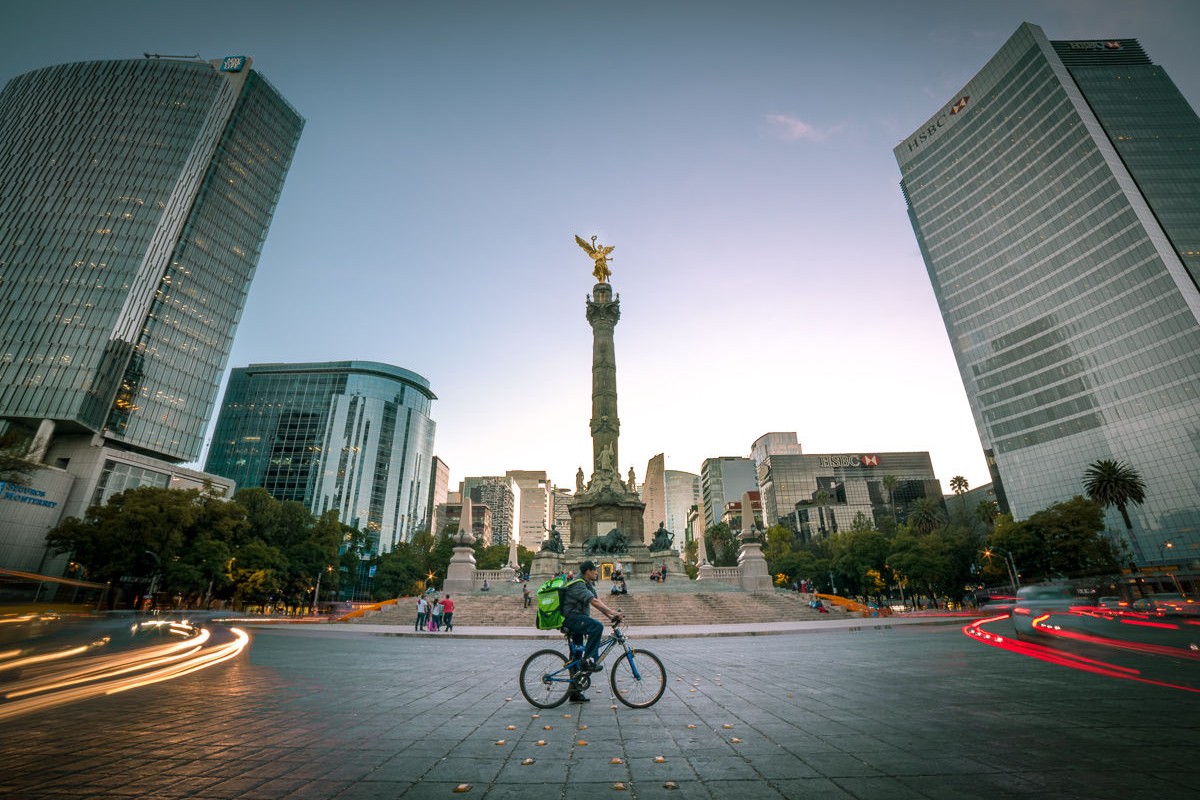
Next, you have a 30-minute walk north to the Angel of Independence, which stands over the center of one of the main traffic circles along Reforma, the city’s central boulevard. This segment is no small jaunt, but you’ll be walking through a charming neighborhood with plenty of random smaller pieces of art scattered about. If you get hungry for breakfast or lunch along the way, stop at Ventanita Café on the Cibeles Plaza for the former or, for the latter, one of the many taco joints just north of Avenida Chapultepec.
Cocodrilo de Leonora Carrington
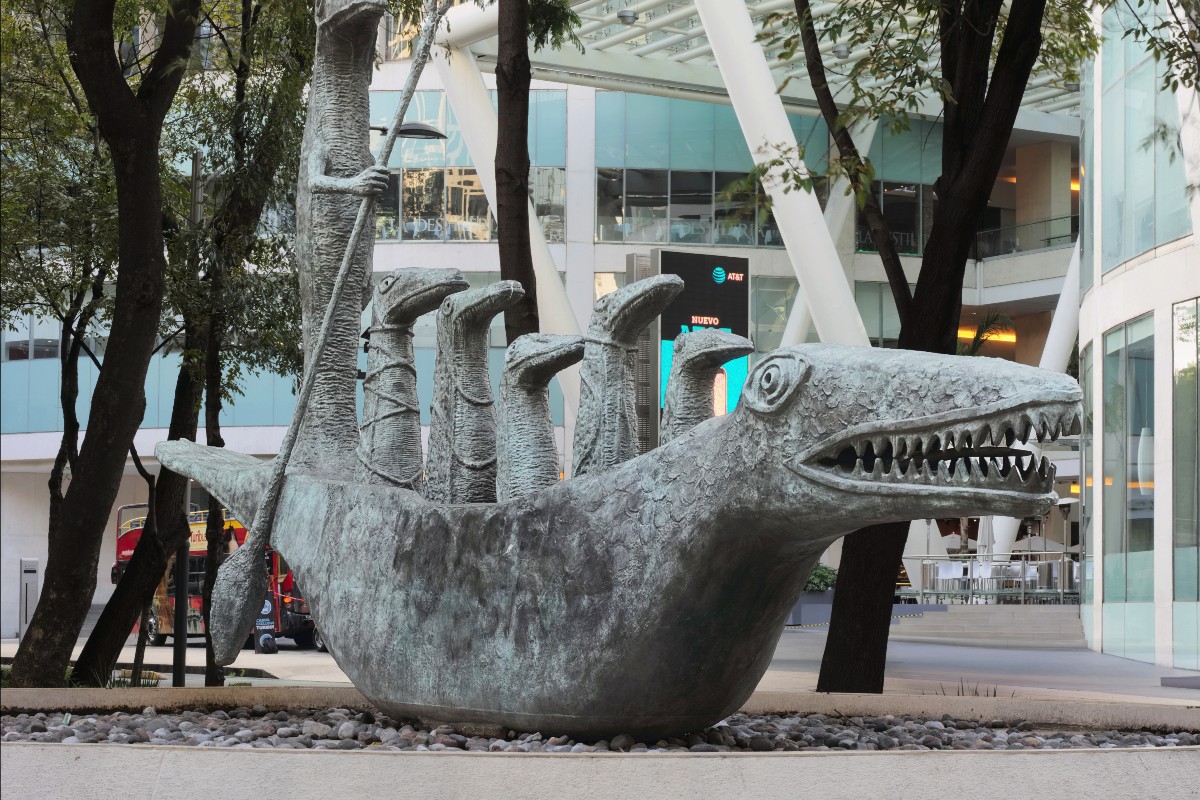
Follow Reforma northeast to the statues by the famed surrealist Leonora Carrington. Her enormous Crocodile is the most recognizable and is one of the most iconic works of art in Mexico City. Along the way, you’ll be surrounded by Mexico City’s largest skyscrapers, some of which are impressively weird. This is one of the city’s busiest streets, so there are plenty of street vendors offering handicrafts and other wares to browse.
Jardin del Arte Sullivan
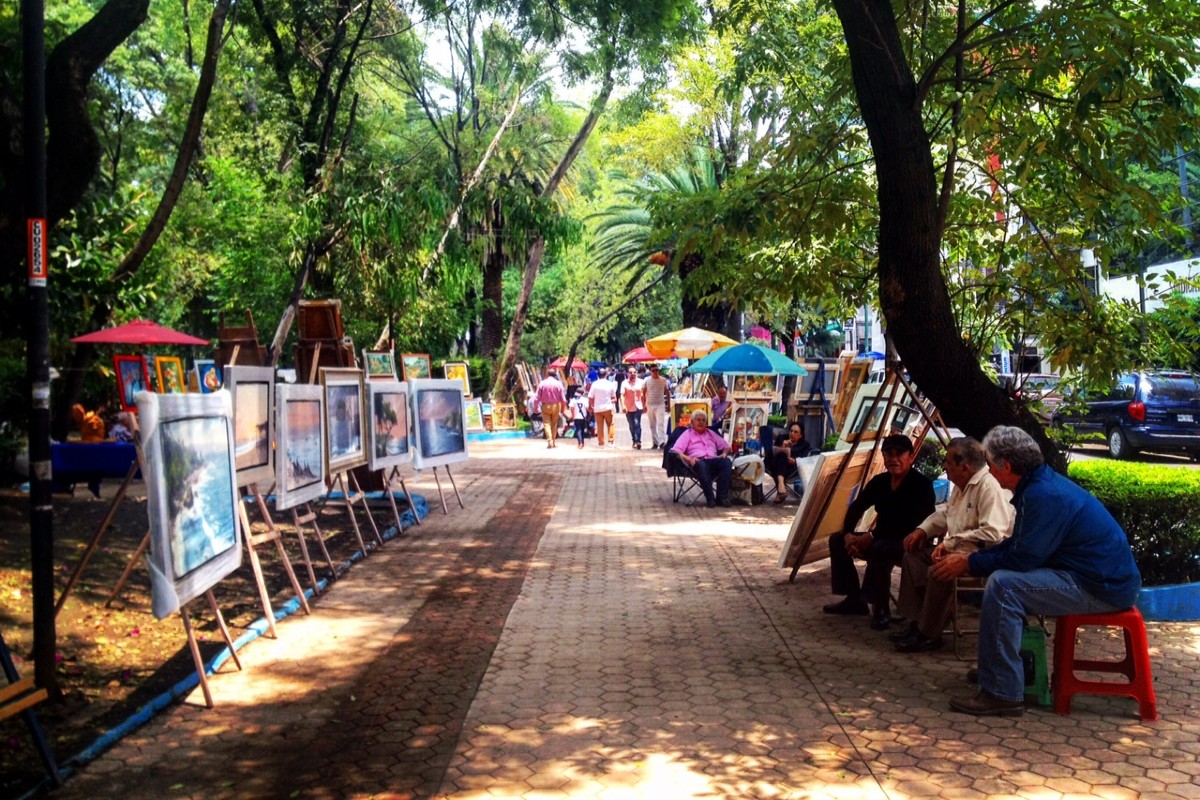
Artists sell their art in this park throughout the week, but it’s got the most to offer on the weekends. Here you can buy a wide range of paintings, handicrafts, jewelry, and so on. If you do happen to visit over the weekend, be sure to walk through the adjacent street market, Tianguis Artesanal Sullivan, where you’ll find plenty of tasty things to eat. If you’re there on a Sunday, have any barbacoa you see and thank me later.
Monumento a la Revolucion
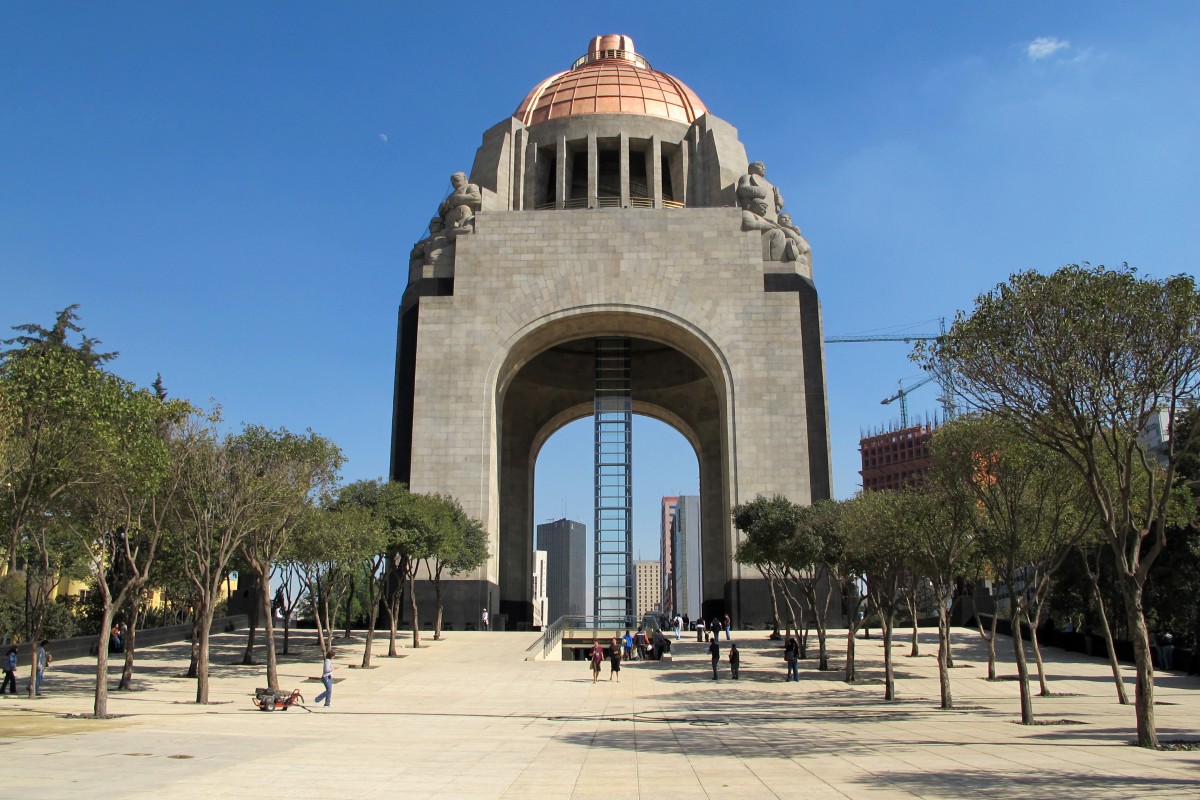
Now you’ll zag back to continue up Reforma — passing some random art along the way — and continue up to Monument to the Revolution. Some call it unique; others call it strange. I say it’s both. Towering at the center of the park that bears its name, the monument offers a massively weird combination of architectural styles. Along the sides of the plaza you’ll find many little bars and cafes that are great options for cooling off with a drink.
Bellas Artes

Head due east to a large park on the other side of Reforma. This is Bellas Artes, a bustling area with many statues, murals, and the golden-domed Palacio de Bellas Artes standing at its center. You’ve been walking for a couple of hours at this point, so it’s not a bad idea to step inside the palace and check out some of the enormous murals on display, including a number from Diego Rivera, the famed husband of Frida Kahlo.
Calle Violeta
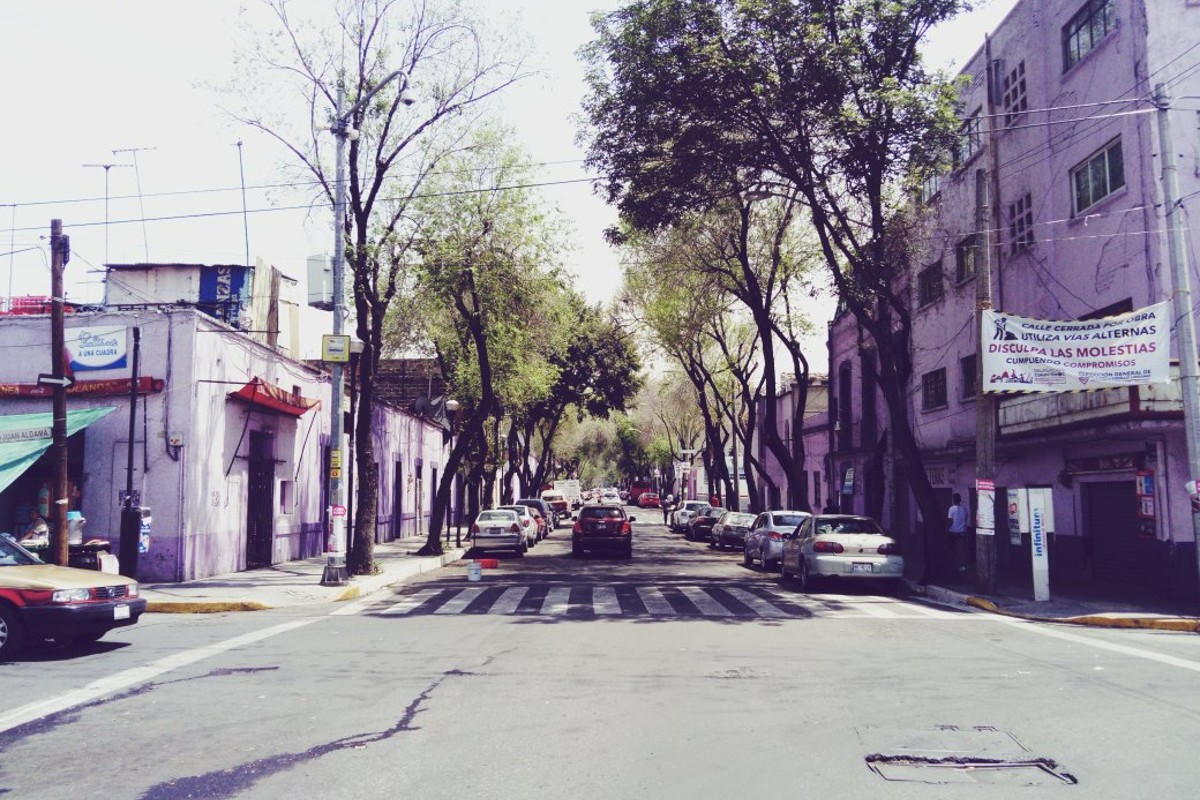
Jaunt a few blocks north to Violeta, a tiny neighborhood where all the buildings are painted a uniform color of violet. It’s a uniquely picturesque little stretch of the city. You will perhaps notice that there is a heavy police presence here. That’s because Violeta has a rather checkered past with regard to crime. These days it’s pretty safe, though it is wise to visit during the daytime and remain aware of your surroundings. Bonus points for spotting the handful of businesses that openly advertise their cartel affiliations.
Guerrero
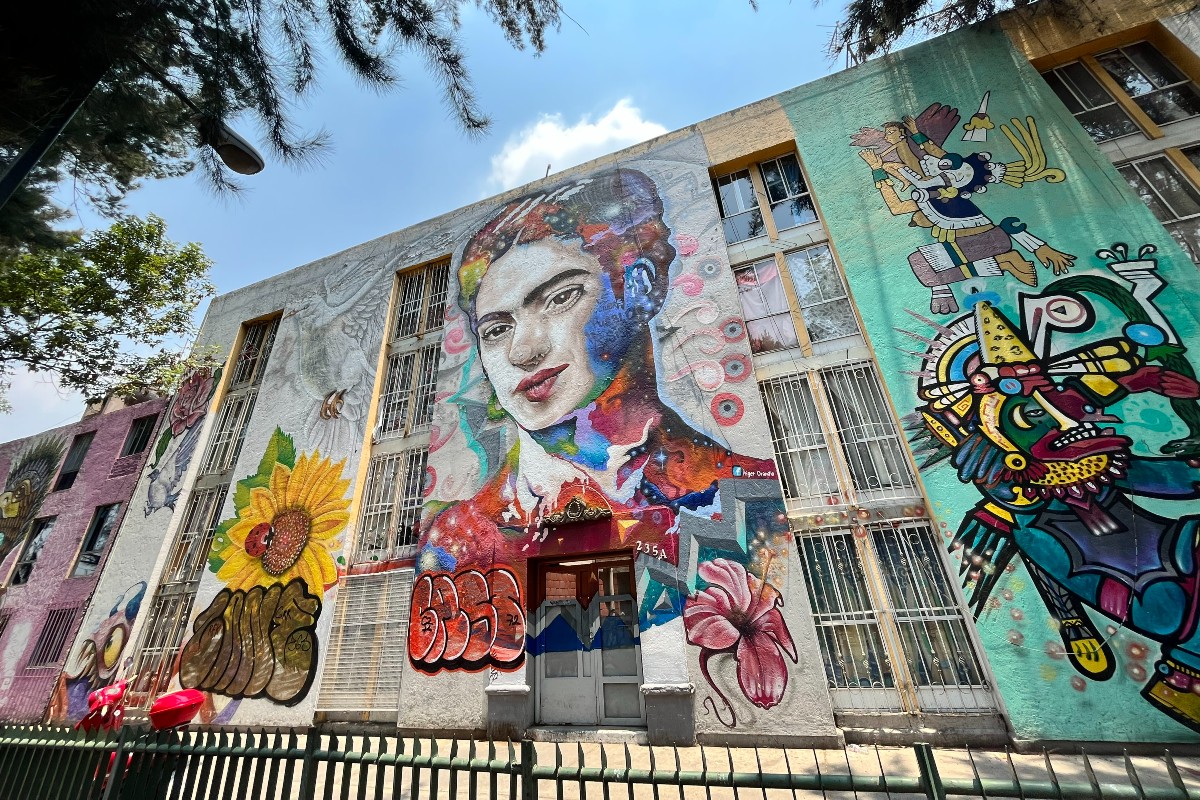
Guerreo is another historically troubled (though recently less so) neighborhood just north of Violeta. The central street offers some of the most glorious murals you’ll find anywhere in the world. It does get rather sketchy after dark — especially if you wander off the main avenue — but during the daytime, the murals are a must-see. While the sun is up, feel free to peruse and take photographs. The owners of businesses with some of the more elaborate artworks are more than happy to talk with you about the significance of the displays.
El Autentico Pato Manila
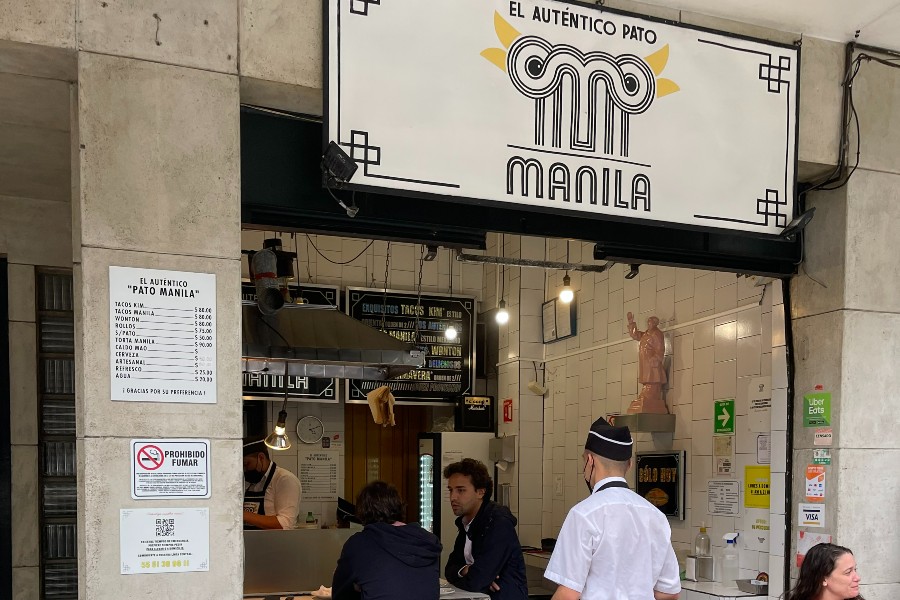
At this point, you’ve wandered across a significant portion of the city proper, so you’re probably tired, hungry, and ready to head back toward your starting point. I’m presuming that you’re staying in Condesa or Roma, so now it’s time to jump in a taxi and zip back to the origin and eat. El Autentico Pato Manila, which has locations in both of these adjacent neighborhoods, offers artistry of flavors representative of your art-filled day. To put that another way, its food is damn good. The menu is concise — duck tacos, duck tortas, duck spring rolls, or duck wantons — but everything on it is extraordinary.



